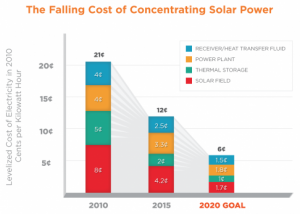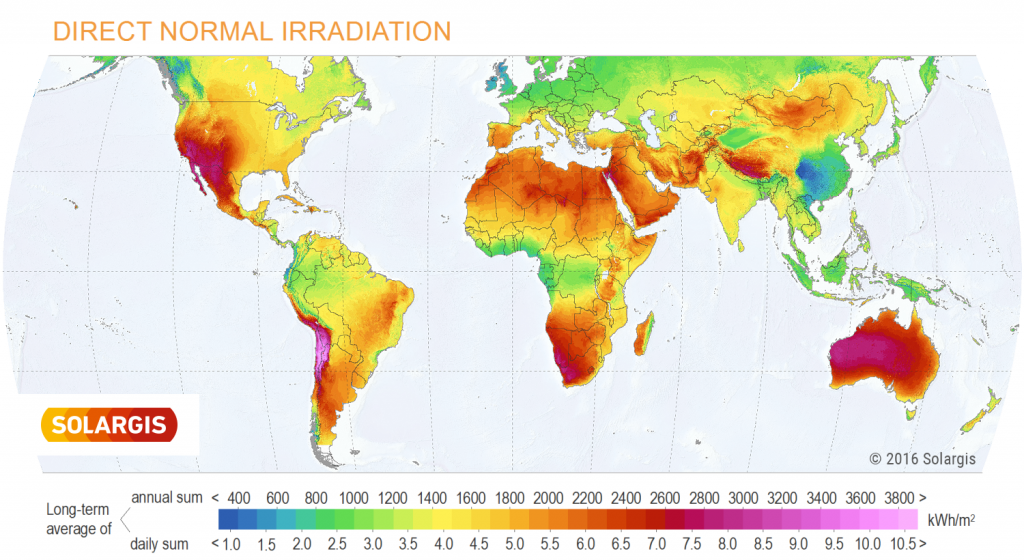The other day I had lunch with a friend and former student who is an expert on concentrated solar power and thought it was worthwhile to look at how the technology is developing since we wrote a case on the topic a few years ago.
The case study was about GE’s acquisition of Astholm and the implications that the deal would have for the company’s advanced renewable technologies business which included its involvement in Ashalim Plot B, one of three projects the Israeli government is building in the Negev dessert. This project is almost complete and will provide 121 MW of power when the sun is shining. A company called Bright Source is delivering the 50,000 computer-controlled heliostats, or mirrors, that reflect sunlight onto a boiler on top of a 250-meter tower.

According to CSP world, a web site, there are a couple of hundred pilots, plants and projects all over the world and you can drill down into specific regions by clicking on their interactive map! While not all analysts agree on the potential for CSP, what seems to be driving the business is falling costs and national pride.
$ 100/MW-Hr
The United States department of Energy has been investing in CSP research and determined several years ago that the cost of power from this technology should fall below the $ 100/MW-Hr threshold and Dubai has received reportedly received a bid for $94.50 for its ambitious 1,000 MW project scheduled for operation in 2020. The tower in Dubai will be even taller than the one in Israel and my friend explained that there is a bit of a competition to see who can have the tallest tower!
Economic & Technological Uncertainty
The key advantage of CSP is that while the capital costs to build the mirrors, tower and boiler can be very high, the fuel cost is zero and the operating costs are very low. The problem is this level may not be enough to be competitive. Solar photovoltaic prices have also come down and are according to the Energy Information Agency are $58.1 or more or less the same as natural gas in the United States.
The other problem that CSP has is that the technology is still new and the largest plant currently in operation, Ivanpah, in Nevada has had operational issues having to do with killing overflying birds and even having its tower catch on fire last year when some of its mirrors were not aligned properly.
Geo-political implications
In my view the biggest argument for CSP has to do with climate change and energy independence. Solar power, of course, produces no green house gasses for countries with enough sunlight, what the experts call direct normal irradiance, there is huge potential for providing clean energy for future generations.
There is also the possibility to trade energy and use its production as a force for peace and stability. For many year a consortium called Desertec has been trying to build momentum for a series of CSP projects across the Sahara which would then power Europe. The idea is to provide money and jobs for the countries of the region and reduce Europe’s reliance on fossil fuels which would, of course, include gas from Russia.
Last year, Morocco commissioned the first phase of its solar complex at Ouarzazate called Noor 1 plant which uses trough technology and is rated at 160 MW and could be the first step in realizing hte Desertec vision.
While a number of large companies have exited the CSP space in the last few years and some of the hype has gone down, China has announced plans to build 20 pilot projects and I am convinced that CSP will play a critical role in the energy mix of 2030.



